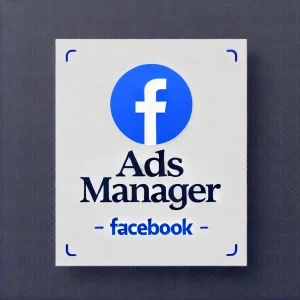
How to protect your advertising budgets from fraud during economic instability
Economic instability often leads to a rise in fraudulent activities, including in the field of digital advertising. Budgets allocated for online ads become targets for various scams, resulting in significant financial losses and reduced effectiveness of marketing campaigns. In this article, we will discuss the main types of fraud, explain how PPC fraud impacts businesses, share tips for identifying risks, and provide effective strategies to protect your advertising campaigns. Stay tuned!
Types of fraud in digital advertising
There are several common types of fraud that negatively impact advertising campaigns. Let’s examine the main ones in detail.
Click fraud (PPC Fraud)
Fraudsters intentionally click on ads to exhaust budgets without any intention of making a purchase or conversion. This can be executed by competitors or bot networks.
Geomasking
A sophisticated method where fraudsters manipulate geographic data to bypass location restrictions. This undermines the effectiveness of geo-targeted campaigns and distorts statistics.
PPC phishing
Scammers create deceptive ads that appear legitimate but lead to malicious websites. This reduces ad effectiveness and harms brand reputation as users may associate the company with fraudulent activities.
Ad stacking
Multiple ads are placed in the same ad space, but the user only sees the top one. Advertisers end up paying for impressions of hidden ads that are not actually viewed.
Impression fraud
Here, the goal is to inflate ad impressions to maximize revenue from CPM-based ads. Bots are often used to generate fake views, lowering real campaign performance metrics.
Cookie stuffing
Fraudsters inject third-party cookies into users’ browsers to earn commissions on non-existent sales.
Bot-driven fraud
Automated bots mimic user behavior by clicking ads, viewing pages, or performing other actions. This drains budgets and skews analytical data.
Click spamming
Fraudsters generate a large volume of fake ad clicks, often using automated scripts or bots. The aim is to quickly deplete advertising budgets with no real benefit.
These types of fraud complicate the battle for campaign efficiency, as each comes with its own risks and consequences for budgets and business reputation.
How does PPC fraud impact businesses?
PPC fraud is not just a technical issue but a significant challenge that can greatly affect financial results and overall marketing campaign efficiency. Its rise during economic instability threatens even the most well-planned advertising strategies. Let’s explore the key consequences of PPC fraud for businesses.
Budget depletion
One of the most evident impacts is rapid budget depletion due to fake clicks. Fraudsters or bots click on ads, draining funds that could otherwise attract real customers.
Example: a campaign for a local coffee shop showed great initial results, but within days, the budget was exhausted by 300 clicks from an unknown region, none of which resulted in conversions.
Distorted analytics data
Fraudulent clicks affect metrics such as CTR, conversion rates, and time spent on-site. This makes it difficult to get an accurate picture of user behavior and complicates decision-making for campaign optimization.
Example: a marketer noticed a sudden drop in average time spent on the website despite an increase in clicks. Analysis revealed fraudulent activities involving bots.
Reduced ROI (Return on investment)
Every fake click lowers ad ROI since money is spent on actions that do not lead to sales or customer engagement. Advertising costs remain high, but profitability declines sharply.
Example: an online electronics store spent $10,000 on a campaign, but only 30% of the budget attracted real customers, as the rest was lost to fraudulent clicks.
Artificial competition
Fraud is often used by competitors to deliberately lower your ad rank, increase bidding costs, or even exhaust your budget entirely.
Example: a competitor of a local auto repair shop systematically clicked on their ads, forcing them to increase bids to maintain visibility in search results.
Other consequences of PPC fraud:
- Erosion of trust in ads: customers may lose trust in the brand if ads lead them to unintended destinations.
- Decreased traffic quality: an influx of low-quality traffic can harm a website’s reputation with search engines.
- Risk of penalties: even unintentional use of fraudulent methods may result in fines or ad account suspension by platforms.
Preventative measures
To mitigate the impact of PPC fraud, consider the following strategies:
- Use specialized tools to monitor traffic.
- Regularly audit advertising campaigns.
- Detects and blocks suspicious IP addresses.
- Optimize geo-targeting to avoid irrelevant clicks.
PPC fraud can have catastrophic consequences for businesses, particularly if critical metrics are overlooked and protective measures are not implemented. Continuous monitoring, employing advanced fraud detection technologies, and flexible campaign management can safeguard your budgets and ensure stable growth even during challenging economic conditions.
Main signs of fraud in PPC advertising and how to identify them in time
Detecting such actions can be challenging, but identifying signs early helps avoid financial losses and adjust your strategy. Let’s explore how to identify fraudulent activities in PPC advertising and the steps you can take to prevent them.
Signs of fraud:
- Abnormal spikes in activity: a sudden increase in clicks without a corresponding rise in conversions could indicate fraud.
- Short time spent on the site: bots click on ads but don’t engage with the site. If the average session duration significantly decreases, this could be a warning sign.
- Suspicious geographical metrics: clicks from regions outside your target area may signal fraudulent activities.
- Duplicate IP addresses: a large number of clicks from the same IP address within a short time frame often points to bot activity.
Regular analysis and specialized tools allow you not only to detect fraudulent actions but also to prevent their impact on your budget. The quicker you respond to these threats, the more effective your campaigns will be, with fewer losses.
Best tools for detecting fraud in PPC advertising
There are several effective strategies to protect your advertising campaigns and safeguard your budget. Here are the key methods to minimize risks:
- Using fraud detection tools: tools like ClickCease, PPC Protect, or Google Ads Bot Filter help automatically identify and block fake clicks. These services analyze traffic and notify you of any suspicious activities.
- Regular analysis of payment reports: ongoing monitoring of reports enables you to detect discrepancies between expenses and results in time. For example, a sharp increase in costs without proportional growth in conversions is a signal of potential fraud.
- Traffic source monitoring: study where your clicks are coming from and exclude sources that do not match your target audience. Geographic data and behavioral characteristics can help identify suspicious traffic.
- Setting budget limits: configure a daily spending limit for your advertising campaign. This helps avoid significant financial losses in case of fraudulent activity.
- Using reCAPTCHA: integrate reCAPTCHA on your website or landing pages. This tool complicates bot attacks, such as fake clicks or mass form submissions, while not inconveniencing real users.
- Creating exclusion lists: exclude irrelevant websites, regions, or users from your advertising campaigns. For instance, avoid sites with low-quality content or regions with suspicious activity. This helps focus the budget on quality traffic.
- Configuring geographic targeting: If your services are targeted at a specific region, exclude all others. This reduces the risk of clicks from unnecessary locations where activity might be fraudulent.
- Conducting regular campaign audits: check click-through rates, conversions, and time spent on the site. Audits help detect suspicious anomalies at early stages.
- Blocking IP addresses: use IP address lists to block suspicious sources. If you find repetitive IP addresses generating many clicks, block them in Google Ads or other platforms.
- Optimizing audience targeting: narrow down targeting to specific audience segments. The more precise the settings, the lower the chance your ads will become victims of fraudulent clicks.
Tips for maintaining efficiency:
- Automate checks: use real-time monitoring tools.
- Regularly review campaigns: analyze them at least once a week to detect problems in time.
- Keep records: save a history of changes to quickly identify the source of an issue.
Protecting advertising campaigns requires a combination of technical tools and constant analysis. By investing time in setting up monitoring, exclusion lists, and other strategies, you not only secure your budget but also enhance the effectiveness of your advertising activities.
Remember, timely action against fraud is the key to a successful campaign and high ROI!











